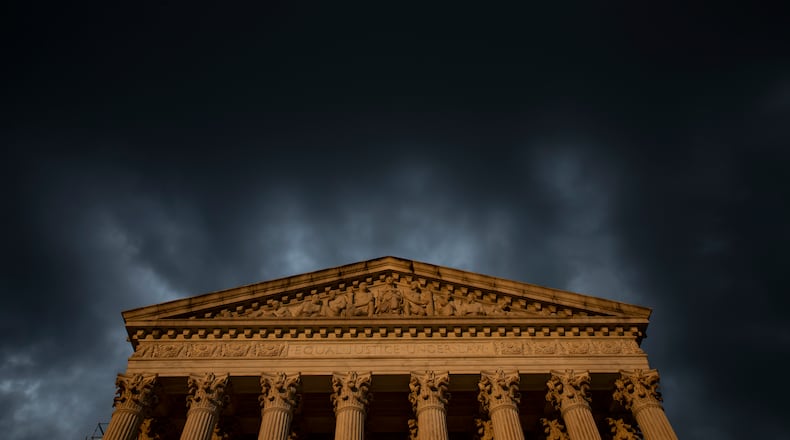America’s high-tech industries grew up hand in hand with a robust system of intellectual property rights. Without strong patent protections to encourage inventors, we would never have become a global leader in software, biotechnology, or artificial intelligence.
Unfortunately, starting 11 years ago, the Supreme Court handed down a series of decisions that have seriously weakened IP rights, and we’re seeing the results. Investors are shying away from high-tech industries, and the public is losing out on much-needed medical technology. This is putting us at a competitive disadvantage with rivals like China, which is rapidly becoming the global innovation leader in specialties like blockchain, machine learning, and nano-materials.
Now, thankfully, there’s a legislative effort underway to correct the negative fallout from those judicial decisions by shoring up the U.S. patent system.
Credit: Ben Gray
Credit: Ben Gray
The downward slide started in 2012, when the Supreme Court took up the case of Mayo Collaborative Services vs. Prometheus Laboratories. Prometheus had sued Mayo for infringing a patent covering a diagnostic test. The Court found that Mayo had indeed infringed.
But the Court also ruled that Prometheus should never have been able to patent its test in the first place. Never mind that Prometheus had devised novel technology to test for proper drug dosage when treating certain gastrointestinal diseases. The test was so good that Mayo saw fit to make a copycat version of its own. Yet the Court held that because the Prometheus test measured a naturally occurring phenomenon, it was ineligible for patent protection.
That Supreme Court ruling had a profound impact on the industry. Within two years, 10.9% of patent application rejections cited the Mayo case as justification. Investors in medical diagnostics research yanked their funding, and almost $10 billion in venture capital vanished.
Within a decade, the United States went from leader to laggard in diagnostics. By the time the pandemic arrived, only European and Chinese laboratories were capable of producing effective COVID tests at scale.
In those early months of the novel disease, Europeans gained quick access to diagnostic tests. But if Americans could get one at all, they had to stand in line for hours, then wait overnight – or even days – for results. Only after many months did at-home rapid tests become widely available in the United States. Even today, we lack quick access to a range new medical tests – for the flu, RSV, strep, and the like.
For all the damage the Mayo decision did, it was just one of a series of cases in which the Supreme Court undermined patent eligibility. In Alice Corp. vs. CLS Bank International, in 2014, the Court ruled on the patent eligibility of a software-implemented invention. The Court found the invention ineligible, but used poorly defined terminology to say so.
The ruling shook fields like artificial intelligence, quantum computing, and telecommunications. By narrowing the scope of patent eligibility, the court diminished rewards for start-ups in these areas, discouraging them from developing novel software to tackle hard technical problems.
Or take the case of Association for Molecular Pathology vs. Myriad Genetics. In 2013, the court ruled that Myriad’s work to isolate human genes outside the body for therapeutic use was ineligible for patent protection. The ruling weakened biotechnology companies’ incentive to invest in gene therapies.
Patent eligibility isn’t just about technological advancement. It also fosters scientific collaboration and the dissemination of knowledge through patent publications. Before Myriad, the patent eligibility of gene-related innovations led to effective knowledge flows, with researchers licensing new technologies for additional study and development as well as for commercialization. The court’s ruling disrupted all that, as life-sciences companies became hesitant to share findings out of fear that their discoveries could be copied and exploited.
Of course, investors have followed these legal developments closely and pulled back from the industries affected. For instance, from 2018 to 2019 -- before the pandemic -- total venture capital funding for American life sciences companies dropped by $1 billion, the first such decline in several years. Yet investment dollars are the lifeblood of medical discoveries.
The solution lies in the Patent Eligibility Restoration Act introduced recently in Congress. It would spell out exactly which technologies are and are not patent-eligible, ensuring that complex diagnostic tests, gene therapies, and path-breaking software can once again be assured of protection.
By unwinding the negative impact of confusing judicial decisions, the Patent Eligibility Restoration Act would strengthen the U.S. intellectual property system, protect innovators, and shore up our ability to compete with geopolitical rivals.
Congress should pass it as soon as possible.
Doug Collins represented Georgia’s 9th Congressional District from 2013 to 2021 in the U.S. House of Representatives and is a former U.S. Senate candidate.
About the Author
Keep Reading
The Latest
Featured

